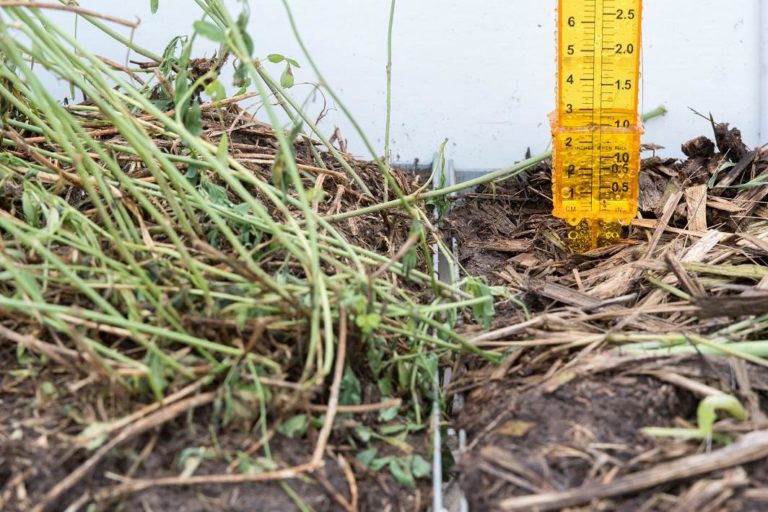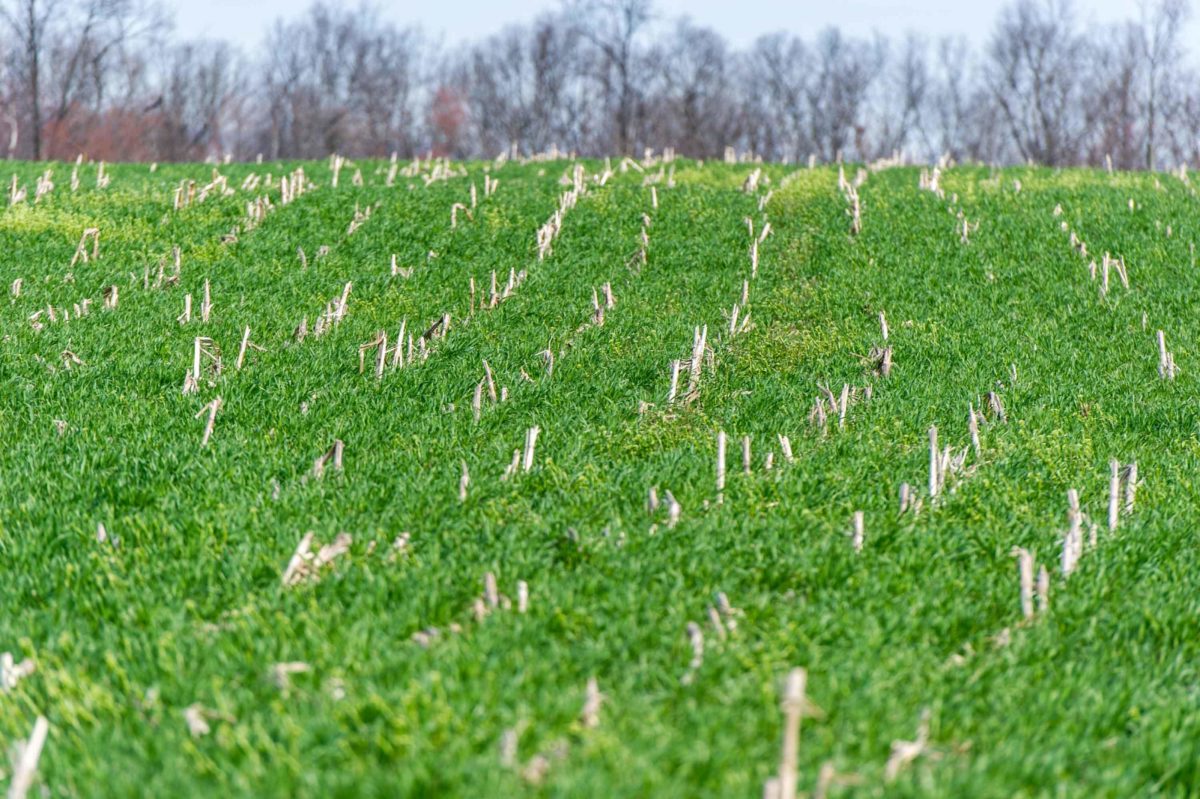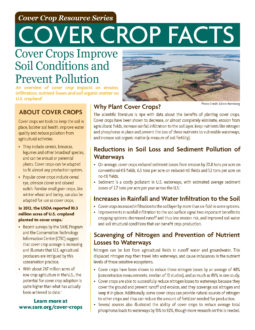An overview of cover crop impacts on water infiltration to the soil.1

Download this fact sheet (PDF). This fact sheet is part of the Ecosystem Services from Cover Crops fact sheet series.
Cover Crops and Infiltration
Cover crops can successfully increase the infiltration of water into the soil layer. They do this by covering the ground with their biomass and by improving soil structure with their roots. Some specific mechanisms include:
- Preventing soil surface sealing (where the soil becomes impermeable after rainfall)
- Improving soil structure with increased soil aggregate stability, soil porosity and water storage capacity
Different types of cover crops may have different effects on infiltration because of their unique biomass growth and composition, and results vary based on how long the cover crop is grown.
- Non-legume cover crops, including bromegrass and rye, increased infiltration by 8% to 462%, based on a range of studies.
- Legume cover crops, including crimson clover, hairy vetch and strawberry clover, increased infiltration by 39% to 528%.
- Soil surface cover by residue alone increased infiltration by up to 180% in field trials.
Management Decisions Matter
Management that encourages continuous ground coverage by residues and cover crops will be best suited to positively impact the infiltration of water to the soil surface. Tillage practices are another important management decision for water infiltration.
- No-till management has been found to increase rainfall infiltration.
- One study reported that runoff from no-till fields was two to four times less than from conventional-till plots.
A Far-Reaching Solution
When water is able to enter the soil profile, rather than running off the soil surface, there is less risk of displacing soil particles through erosion. Increased infiltration also signals possible benefits to the water conditions within the soil profile. By keeping the soil in place and improving soil conditions, cover crops are mitigating pollution risk while also boosting the productive capacity of the soil.
About Cover Crops

Cover crops are tools to keep the soil in place, bolster soil health, improve water quality and reduce pollution from gricultural activities.
- They include cereals, brassicas, legumes and other broadleaf species, and can be annual or perennial plants. Cover crops can be adapted to fit almost any production system.
- Popular cover crops include cereal rye, crimson clover and oilseed radish. Familiar small grain crops, like winter wheat and barley, can also be adapted for use as cover crops.
1 Unless otherwise cited, all data comes from a bibliography compiled by SARE and the University of Missouri.
